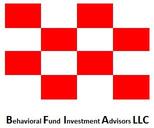 Author: Todd Feldman, BFI Advisors
Author: Todd Feldman, BFI Advisors
Model: Behavioral Global Macro
Disclosure: Long EMB, GLD, HYG, IXC, SLV
Our Behavioral Finance Investment Advisors (BFIA) indicators had been flashing warning signs that March was going to be a rough month. We were therefore cautious and purchased inverse ETFs to protect our positions in March. We however, closed out our inverse ETF position too early and did not protect the portfolio fully from all the downside in March.
At the beginning of March we re-balanced the portfolio to more heavily favor energy and commodities, which we see as the outperformers for the timing being. We therefore purchased securities in energy markets and other commodity plays such as Russia and Canada, in addition to investing directly in commodities by buying oil and silver.
Our indicators suggested that the emerging market trade was not attractive going forward. However, there were several emerging markets that the model signed were going to break out. Those included Poland, Brazil, and Russia. Since buying those markets, we have seen nice returns.
At this time the model still likes energy, commodities such as gold and silver and other industrial metals, high yield investments such as emerging market debt, U.S. high yield corporate debt, and REITs. In addition, the model likes select emerging markets such as Russia, Eastern Europe, and Brazil. We are currently looking at Indonesia as the model suggests a breakout in that market. In addition, we like the story in Indonesia, as it’s close to China and has the fiscal side under control.
Going forward in April, we see these sectors outperforming.
However, our model is signaling that the market is going to have a bad six to seven weeks in the summer. It could take place in May, June, or July. We therefore are preparing to increase our cash position going into May. Once a 7-10% pullback occurs, we will redeploy that cash based on the model results. Usually, when a downward move between 7-10% occurs, there is a rotation in the model’s results and a new group of outperformers will develop.

